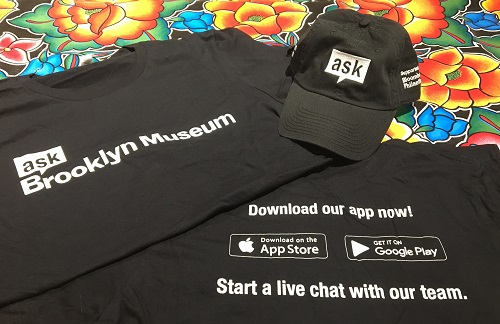We’ve been silent, but we’ve been busy
I will admit, I’m a little embarrassed that it’s been more than a year since our last post. Rest assured, while we may have been radio silent, we’ve been pretty busy. In my last post, I proposed a shift away from a laser-like focus on increasing the use rate of ASK to make room for learning from the data.
Don’t get me wrong, we still care about use rate and want as many visitors as possible to use ASK, but we are no longer consumed by that metric. We have kept the tactics that work best. For example, our ASK Ambassador program is going strong and still makes the greatest difference: there is a direct correlation between Ambassador staffing and use rate. We’ve seen this repeatedly since launching the Ambassador program in 2017. We’ve also continued to play with engagement via ASK, particularly in relation to major special exhibitions, which—let’s face it—is why a majority of visitors come to the Museum. For the David Bowie is exhibition, we created a special trivia activity that was so popular we could barely keep up. Jessica will share more about that in a future post. She’ll also share about what we are currently doing in relation to Frida Kahlo: Appearances Can Be Deceiving, on view until May 12.
In addition to these initiatives, I’m delighted to say we’ve added a Pratt fellow to our team this year who has been focusing on the data. Sydney Stewart is a second year graduate student in the Museums and Digital Culture program in the School of Information at Pratt Institute. (Full-disclosure, I teach for that program and Sydney is one of my stellar students). It’s amazing what we have been able to learn by having one person focus on the data, and I’ve invited Sydney to share her research and results here in the coming weeks.
When it comes to truly getting into the ASK data, I find we’re constantly bumping up against what happens when you build minimal viable product (MVP) as part of an agile process: short-sightedness. We purposefully weren’t thinking long-term when developing the dashboard (the interface the team uses to answer questions and process chats), only what we needed in the moment. Because we were building MVP, we didn’t plan for or build ways to access the larger data set. We only created tools for our initial needs, which were basic metrics and ways to share conversations with curators for fact-checking purposes. Now that we are trying to get a better handle on the scope and possibilities of the data, we are having to look into building tools to access it. For now, the Tech team runs reports for us when we know what to ask for. I suppose you could say we’re having to get agile once again by using Sydney’s research path as a way to help us understand what we actually want and need to know from the data set. Unfortunately, that makes it a little difficult for her as there is a delay between her determination of needed data and our ability to give her that data. Fortunately, she’s been more than up to the task, and she’ll share some of her creative workarounds and what she’s been able to do with existing metrics.
Our period of radio silence is over, so stay tuned!

Sara Devine joined the Brooklyn Museum as Manager of Interpretive Materials in 2011 and is now Director of Visitor Experience & Engagement. A vocal visitor advocate, her expertise lies in crafting accessible and engaging visitor experiences and reaching audiences across platforms. She works with curators, designers, educators, technologists, and editors on all aspects of visitor experience and engagement. Sara is also a visiting assistant professor and curriculum coordinator at Pratt Institute’s School of Information for their graduate program in Museums and Digital Culture. She was previously Senior Content Developer and Project Manager at Hilferty, a museum planning and design firm in Ohio, where she developed comprehensive interpretive master plans and exhibitions for a wide variety of museums. She has also worked at Assistant Curator, Special Exhibition at Thomas Jefferson’s Monticello and as a Curatorial Assistant at the Smithsonian Museum of Natural History.



Start the conversation